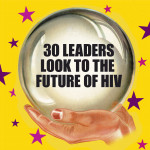Happy Drug Holiday!
For those HIVers fortunate enough to access and afford it, HAART grants life—but sometimes at the cost of livelihood. True, today’s regimens are generally nowhere near as brutal as the ’80s’ high-dose AZT. But after braving HAART’s cost, dosing schedule and complicated side effects many HIVers want a vacation. In August 2001, POZ ran a cover story (“Gimme a Break!” by Mike Barr) about the increasing numbers of HIVers who were taking scheduled treatment interruptions (STIs).
Back then, pioneers who booked drug holidays were bucking (if only temporarily, warily) five years’ prevailing wisdom about drug adherence—and even their doctor’s orders. But for some, an STI proved as effective as HAART itself.
Today, some of Barr’s questions—“How do you decide if you don’t ‘need’ to be on meds? Is it safe to stop everything in one fell swoop?”—have been answered. And while there are still only a handful of formal studies being conducted about STIs— the most significant is the feds’ multi year SMART program —many doctors can now advise HAART-break–hungry HIVers about their options with more accuracy. “Generally, if your CD4s are above 200, you’re a better candidate,” says New York City AIDS doctor Antonio Urbina, MD, adding that studies show that “the higher your CD4 count was when you initiated HAART, the longer your treatment interruption might be. The thinking is, if you start earlier, we can regenerate your immune system,” which in turn leaves your body better prepared to withstand a drug holiday. Still, Urbina cautions, an STI demands commitment and watchfulness—especially for signs of resistance, the big unknown in STI treatments. But, he says there’s no denying that STIs will change the way we consider long-term treatment. “Without a cure, STIs are the future,” Urbina says. “We have to push for drugs that will be curative, rather than repressive.”
Woman of the Year: Susan Rodriguez
I knew there was going to be controversy,” says HIVer Susan Rodriguez, founder of SMART (Sisterhood Mobilized for AIDS/HIV Research and Treatment) University, a New York City nonprofit that educates women about HIV. “But I wasn’t really prepared for how much.”
No kidding. In October 2001, Rodriguez and four other SMARTies—HIVers Mary Alexander, Michelle Lopez, Mary Hanerfeld and Petra Barrios—appeared on the cover of POZ alongside some, well, provocative text: “These women thought they had killer vaginas. Then they learned girls don’t give guys AIDS. Now they’re sticking it to the officials and advocates who made the myth of ‘hetero AIDS.’ Here comes female trouble.” The article, “Vagina Monologues,” accused the New York City Department of Health and amfAR of exaggerating the rate of female-to-male HIV transmission through vaginal sex (which a 1997 University of California at San Francisco report called “too small…to calculate accurately”). By distorting the truth, argued maverick AIDS doc Joseph Sonnabend, ’80s advocacy groups could raise money by pitching the virus as the Great Het Threat. It worked. The ’90s were abuzz with predictions of a U.S. hetero AIDS epidemic, positive women spent the decade convinced that they had—as she memorably put it—“killer vaginas” awash in jinxed juices.
The piece generated mail from grateful women, as well as some livid men. “To say that women don’t give HIV is straight bullshit,” wrote one. (See “Cancel My Subscription.)
“It was a very tough time for me,” Rodriguez says now, adding that her only intention was to “educate other women.” Despite the uproar, she believes that the article proved how destructive data manipulation can be—even if done with the best of intentions. “If you mess with data,” she says, “you’re not putting the money into the population that needs it most.”
Her top priorities remain SMART (www.smartuniversity.org) and her three children; the MAC/AIDS fund recently named her an honorary spokesperson. Her former “juice sisters” have also moved beyond the drama: Hanerfeld left SMART, but Alexander and Barrios remain, as does Michelle Lopez, founder of the South Caribbean AIDS fund. “Some women with HIV don’t have support,” says Rodriguez. “I would tell them: Always know there are other women out there who are with you.”
’01 Personal Best
Annus Horriblis by Dominic Hamilton-Little
Despite eight years with HIV, my soundtrack at 2001’s dawn was a harmony of Viennese waltzes and circuit repeat-a-thud. Doing fine on antiretrovirals, I owned my Manhattan studio, was salaried with benefits and was mother of the merriest house in the Fire Island Pines.
The only discordant note was my diabetes, which demanded daily insulin shots. At least it was mild—until one sun-dappled morning in March. I twirled off to work—and into a blackout. Awakening in an ambulance, I sobbed amid confusion, vomit and pain. A massive hypoglycemic crash had broken and dislocated one shoulder, cracked ribs and severed my olfactory nerve.
Soon after, another crash damaged speech and memory. At work, I’d stutter and make mistakes. Then, I was laid off as the economy soured. Meanwhile, my beloved father’s cancer accelerated.
So my 2001 sucked—but not because of HIV. My father died the following year, but I am consoled that I eulogized him, not the reverse. And recently, my diabetes landed me in the ICU again. But as my beautiful husband drove me home, I reflected on the banal blessing of surviving HIV: dealing with all that Life tosses the living.
Dominic Hamilton-Little has been a contributor to POZ since 1995.
Celebrity Buzz
Styx bassist Chuck Panozzo, 53, announces he’s gay—and HIV positive. “I didn’t want to die like a coward like others in the entertainment business,” Panozzo told POZ soon after coming out. Ka-ching!
Actress Emma Thompson gets all Liz Taylor on us, shuffling off to Mozambique and Uganda as global anti-poverty group ActionAid’s ambassador. AIDS, Thompson told POZ in 2003, “is the biggest problem facing mankind.”
P. Diddy, Gwen Stefani and Mary J. Blige (among others) raise their voices on the World AIDS Day single “What’s Going On.” Meant to help the Global AIDS Alliance, proceeds are instead shared with 9/11 family charities.
Hey! Days
April 3
The slang term down low—men of color who have sex with men but don’t identify as gay—goes mainstream in a New York Times article. Two months earlier, POZ put Rufus Milliam on its cover; he’s one of the staggering 30 percent of twentysomethings on the DL who, says the CDC, have HIV.
April 9
After announcing that the position would be 86’d, President Bush installs openly gay Republican Scott Evertz as the new AIDS czar. But the pro-condom Evertz lasts only 15 months before he’s given the evangelical boot.
June
One generation and 20 million global deaths later, the media commemorate the 20th anniversary of AIDS. POZ spends the year asking, in its Y2K research series, Where’s the cure?
June 25–27
The U.N. holds its first-ever Special Session on AIDS. It’s a cacophony of good intentions, special interests, culture clashes— and more questions than answers.
September 11
This day of terror and massive death leaves more than one HIVer saying, “Now you know” to fellow Americans. And already-shrinking ASOs can’t help but shudder in anticipation of the fundraising lost to 9/11.






Comments
Comments